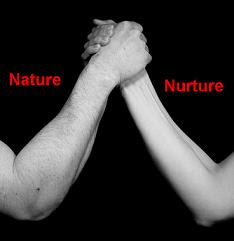Edward Thorndike:
1. Explain Thorndike's puzzle-box experiment.
1. Explain Thorndike's puzzle-box experiment.
Thorndike puts a cat in a box and observes it. The cat starts to move around the box to see the way out. Then Thorndike placed a plate of salmon outside the box and the cat starts to smell it. He gets as close as possible to the salmon and starts to reach out for it. The cat later starts to move around and scratches the bars from the box. He later bumps to the door and the door open. The cat could eat the salmon. At first the cat did not know how to get out but with many tries he later found out and did it more quickly.
2. Explain Thorndike's "Law of Effect".
2. Explain Thorndike's "Law of Effect".
The law of effect proposes that responses closely followed by satisfaction will become definitely attached to the situation and therefore more likely to reoccur when the situation is repeated.
3. Explain Thorndike's "Law of Exercise".
Is the stimulus response connections that are repeating are the ones that are strength. The stimulus response that are not used are weakened.
B.F. Skinner:
1. Explain Skinner's concept of Operant Conditioning
Operant Conditioning involves reinforcement and punishment. It changes the behavior tendencies. It associates a stimulus with a response.
2. What does reinforcement always do?
2. What does reinforcement always do?
In reinforcement, behavior increases. It increases the strength and or frequency of the response.
“Y expected ==> Anticipate feeling good ==> Do X ==> Y does not happen ==> Feel bad ==> Do X less
Z happens ==> Feel bad ==> Do X ==> Z does not happen ==> Feel better ==> Do X less”
(http://changingminds.org/explanations/behaviors/conditioning/types_conditioning.htm)
3. What does a punishment always do?
3. What does a punishment always do?
In punishment, behavior decreases. It is another reinforcement but it is not a negative reinforcement. It happens when the behavior is nor desirable.
“Do X ==> Z happens ==> Feel bad ==> Do X less” (http://changingminds.org/explanations/behaviors/conditioning/types_conditioning.htm)
4. Explain the difference between "positive" and "negative" as they are used in operant conditioning.
A positive rein enforcement happens when a behavior is strength as a result of a positive condition. In a negative happens when the behavior is strength avoiding a negative condition.
Positive: “Do X ==> Y happens ==> Feel good ==> Do X more” (http://changingminds.org/explanations/behaviors/conditioning/types_conditioning.htm)
Negative: “Z happens ==> Feel bad ==> Do X ==> Feel better ==> Do X more” (http://changingminds.org/explanations/behaviors/conditioning/types_conditioning.htm)
http://changingminds.org/explanations/theories/operant_conditioning.htm
















